Art Curator
Entry Level Qualification
12
Career Fields
Arts & Design
For Specially Abled








About Career
PARTICULARS | DESCRIPTION |
Name | Art Curator |
Purpose | Manage And Organize Art Collections |
Career Field | Arts & Design |
Required Entrance Exam | AIEED, IICD UG, IICD PG |
Average Salary | 150000 - 200000 Rs. Per Year |
Companies For You | Devi Art Foundation, The Kochi-Muziris Biennale, The Sculpture Park & Many More |
Who is Eligible | Class 12th Pass |
1. Art Curators are the collectors, exhibitors, interpreters, and conservers of various works of art of aesthetic and historical importance primarily in museums, art galleries, libraries, and private collections. These art forms are not limited to paintings, sculptures, ceramics, pottery, and murals only but also include modern artworks such as digital art, digital paintings, installation art, lighting design, photography, etc.
2. As an Art Curator, you would be involved in various activities such as creating and labeling exhibitions, keeping track of inventories & collections, and overseeing research on art pieces such as analysis of paintings to determine their origin and authenticity.
3. Art Curating is all about weeding out the copies of artwork, understanding art, putting it together, and exhibiting it to a larger audience. As an Art Curator, you should be able to understand art, its various genres, forms, and its significance over time; you should be able to present and explain its meaning to various audiences such as art critics, art dealers, and viewers.
Key Roles and Responsibilities
As an Art Curator, you would be involved in the following key roles and responsibilities:
1. You would create the collection of a museum, art gallery, etc. You would also research the art market to know what’s available among various collectors, auction houses, and art dealers, what may not be yet in the market, but somebody holds it as a personal collection, or who might put together an installation work or digital artwork.
2. You would get in touch with the collectors, artists, artwork owners, and others; you will participate in an auction (mostly along with an art dealer), to initiate a talk of sales. You along with Art Dealer would also be involved in negotiating with art owners and other dealers.
3. You would be involved in acquiring, collecting, and cataloging (listing) works of art, as well as ensuring their overall care.
4. You would create aesthetically impressive gallery presentations and support an excellent visitor experience.
5. You would be involved in the art community by publishing research and information in journals, catalogs, and books.
6. You would be responsible for updating information about the art market and in-depth knowledge of the collections and exhibitions you manage.
7. You would collaborate extensively with cross-departmental teams to present exhibitions, both original and borrowed, that are rigorous and visitor-centric.
8. You will research the collections, recommend acquisitions, develop relationships with collectors, engage deeply with clients and understand their preferences and demands, and provide access to art in ways that foster new scholarship, creative thought, and critical dialogue around today’s pressing cultural, political, and social questions.
9. You will be innovative in your approach to engage audiences and be responsive to what the community needs. You will produce presentations, materials, and exhibitions that are inclusive, accessible, welcoming, and relevant.
10. You would also perform administrative duties such as participating in the construction and tracking of exhibition budgets and participating on cross-departmental teams for exhibitions and other museum initiatives.
11. You would research, develop, and collaborate with museum and faculty colleagues to organize and present compelling installations of the permanent collection, as well as ambitious traveling exhibitions of varying scope; develop related programming, including lectures, symposia, and other educational programs.
12. You would work with the exhibitions team to coordinate project budgets, assisting in the development, preparation, and supervising of exhibition budgets.
Career Entry Pathway
Class 10 all subjects as per the scheme of studies - Class 11-12 with any subject as per the scheme of studies – Bachelor’s in Fine Art/ Visual Art/ Applied Art/ Studio Art/ History of Art/ similar discipline - Eight to ten years of experience as an Assistant Curator at a gallery, museum, exhibition center, etc. – Work as an Art Curator.

After completing class 10 all subjects as per the scheme of studies and after Class 11-12 with any subject as per the scheme of studies, you can pursue a Bachelor’s degree in a field of art such as Fine Art / Visual Art/ Applied Art/ Studio Art/ Painting/ Sculpture/ History of Art/ in a similar discipline. Then you may find a work opportunity as an Assistant in the curation department of an art gallery, museum, exhibition center, etc. With 8-10 years of experience, you can become an Art Curator.
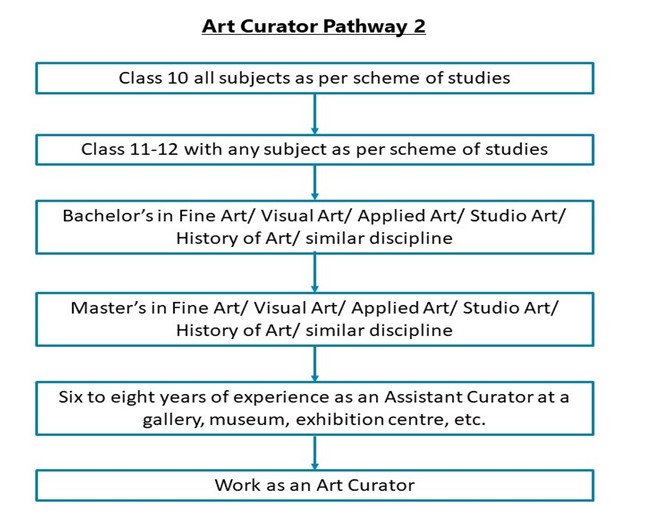
After completing class 10 all subjects as per the scheme of studies and after Class 11-12 with any subject as per the scheme of studies, you can pursue a Bachelor’s degree in a field of art such as Fine Art / Visual Art/ Applied Art/ Studio Art/ Painting/ Sculpture/ History of Art/ in a similar discipline. Then you can pursue a Master’s degree in a field of art such as Fine Art / Visual Art/ Applied Art/ Studio Art/ Painting/ Sculpture/ History of Art/ in a similar discipline. Then you may find a work opportunity as an Assistant in the curation department of an art gallery, museum, exhibition center, etc. With 6-8 years of experience, you can become an Art Curator.
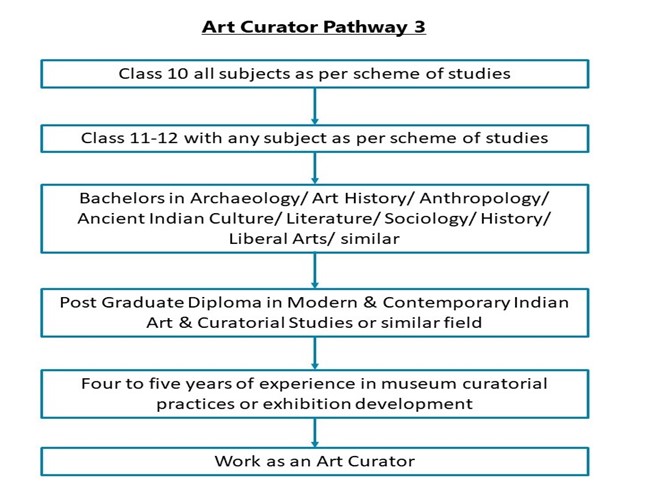
After completing class 10 all subjects as per the scheme of studies and after Class 11-12 with any subject as per the scheme of studies, you can pursue a bachelor in Archaeology/ Art History/ Anthropology/ Ancient Indian Culture/ Literature/ Sociology/ History/ Liberal Arts/ similar field. After graduation, you can go for a Post Graduate Diploma in Modern and Contemporary Indian Art and curatorial Studies or a similar field. To become an Art Curator you would have to work for at least four to five years in museum curatorial practices or exhibition development.
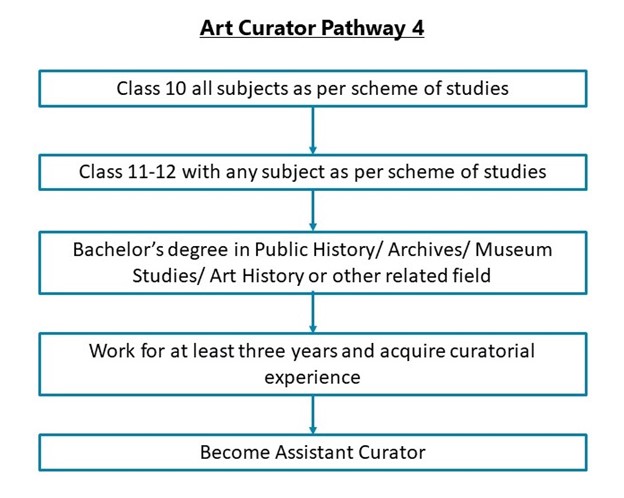
After completing class 10 all subjects as per the scheme of studies and after Class 11-12 with any subject as per the scheme of studies, you can go for a Bachelor’s degree in Public History/ Archives/ Museum Studies/ Art History or another related field. After graduation, you can directly start working as an Art Intern for at least three years gain curatorial experience, and then become an Assistant Curator.
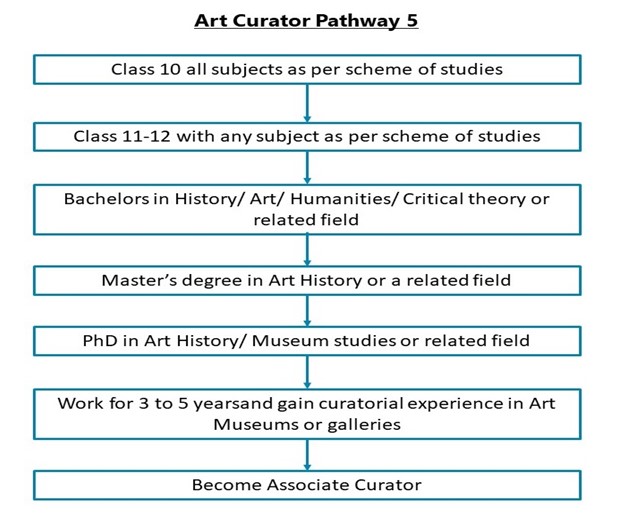
After completing class 10 all subjects as per the scheme of studies and after Classes 11-12 with any subject as per the scheme of studies, you can go for a Bachelor in History/ Art/ Humanities/ Critical theory or a related field. After graduation, you can then pursue a Master’s degree in Art History or a related field followed by a Post Doctoral degree in Art History/ Museum studies or a related field. After completing higher studies you can start working in Art museums or galleries and gain at least 3-5 years of experience to become an Associate Curator.
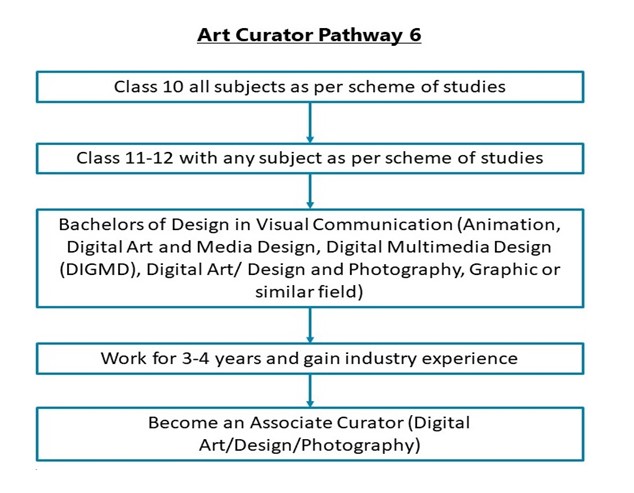
After completing class 10 all subjects as per the scheme of studies and after Class 11-12 with any subject as per the scheme of studies, you can pursue Bachelor of Design in Visual Communication with a specialization in Animation, Digital Art, and Media Design, Digital Multimedia Design (DIGMD), Digital Art/ Design and Photography, Graphic or similar field. After graduation, you can then start working as an Intern or Trainee and gain work experience of at least 3-4 years to become an Associate Curator in Digital art/design or photography.
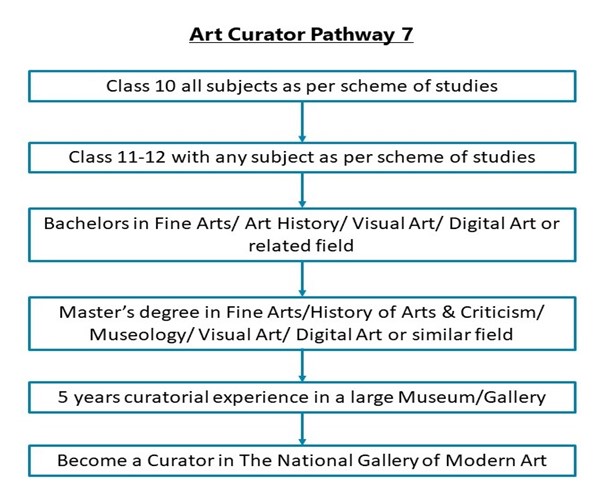
After completing class 10 all subjects as per the scheme of studies and after Class 11-12 with any subject as per the scheme of studies, you can pursue a Bachelor of Design in Fine Arts/ Art History/ Visual Art/ Digital Art or a related field. After graduation, you can then pursue a Master's degree in Fine Arts/ Art History/ Visual Art/ Digital Art or a related field and gain work experience of at least 5 years in a large Museum/Gallery to become a Curator in The National Gallery of Modern Art.
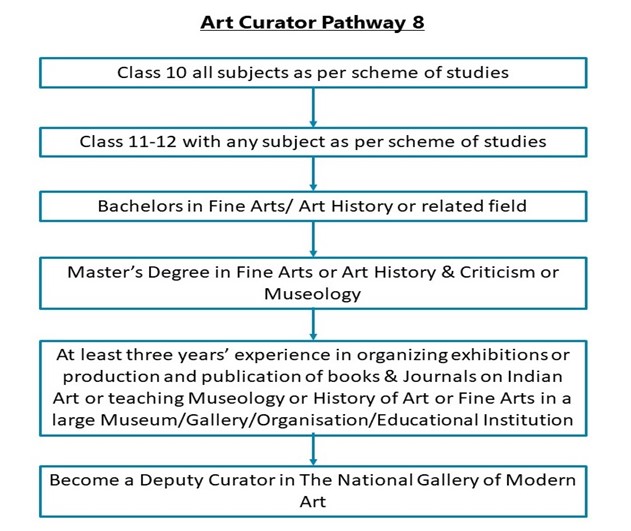
After completing class 10 all subjects as per the scheme of studies and after Class 11-12 with any subject as per the scheme of studies, you can pursue a bachelor's degree in Fine Arts/Art History or a related field. After graduation, you can then pursue a Master's degree in Fine Arts/Art History and Criticism or Museology and gain work experience of at least three years experience in organizing exhibitions or production and publication of books and journals on Indian Art or teaching Museology or History of Art or Fine Arts in a large Museum/Gallery/Organisation/Educational Institution to become a Deputy Curator in The National Gallery of Modern Art.
Required Qualification & Competencies
After completing class 11-12 with any subject as per the scheme of studies, you can pursue a Bachelor’s degree in any of the following fields and get a work opportunity. You may also do a Master’s degree and look for an opportunity. Some Curators join work after a Ph.D. degree. You may do a Bachelor’s/ Master’s/ Doctoral degree in any of the following fields to become an Art Curator:
1. Ancient History & Archaeology
2. Animation Design
3. Animation Film Design
4. Anthropology
5. Applied Art
6. Archaeology
7. Art Appreciation
8. Calligraphy
9. Ceramic and Glass Design
10. Conservation and Restoration of Art
11. Contemporary Art
12. Craft Design
13. Digital Art
14. Digital Design
15. Digital Preservation & Curation
16. Drawing
17. Earthenware Design
18. Fine Arts
19. Furniture and Interior Design
20. Graphic Art
21. Graphic Design
22. History
23. History of Art
24. Installation Art
25. Metal Work and Design
26. Multimedia Design
27. Museology
28. Museum Anthropology
29. Natural Fibres Craft and Design
30. Painting
31. Photography
32. Photography Design
33. Printmaking
34. Sculpture
35. Stonework and Design
36. Studio Art
37. Visual Arts
38. Visual Communication Design
39. Wood Craft and Design
MINIMUM EDUCATION REQUIRED | MAXIMUM EDUCATION REQUIRED |
Under Graduate Undergraduate Degree / Honours Diploma / Graduate Diploma (equivalent to a Degree) Programs for which the minimum eligibility is a pass in Higher Secondary / Class XII School Leaving examination. | Doctoral All Ph.D. or equivalent degree programs for which the minimum eligibility is a Postgraduate or a Pre-Doctoral degree. |
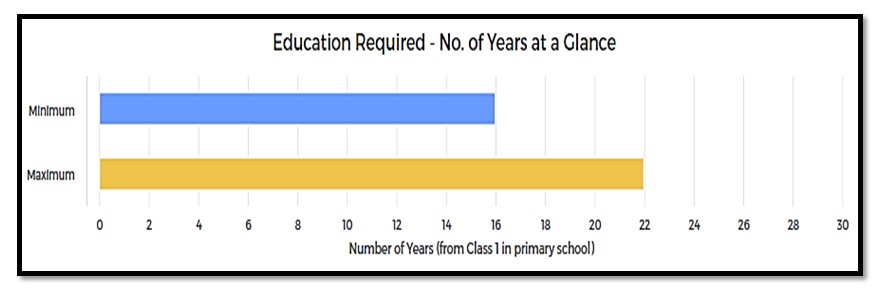
Competencies Required
Interest
1. Investigative: You should have an interest in Investigative Occupations. Investigative occupations involve working with ideas and quite a lot of thinking, often abstract or conceptual thinking. These involve learning about facts and figures; involve use of data analysis, assessment of situations, decision-making, and problem-solving.
2. Realistic: You should have an interest in Realistic Occupations. Realistic occupations involve more practical and hands-on activities than paperwork or office work. Realistic occupations often involve physical activities for getting things done using various tools and equipment.
3. Social: You should have an interest in Social Occupations. Social occupations involve helping or assisting others; these involve working with and communicating with people to provide various services; these may involve educating and advising others.
Knowledge
1. Fine Arts: Knowledge about the theories and techniques required for producing various works of fine arts such as painting, drawing, illustration, sculpture, digital art, installation art, craft, visual art, etc.
2. History and Archaeology: Knowledge of historical events and their causes, historical evidence, interpretations of the learning from historical events, and influences of historical events on civilizations and cultures.
Skills
1. Active Listening: Giving full attention to what other people are saying, understanding the points being made by others, asking questions, etc.
2. Active Learning: Focused and continuous learning from various sources of information, observation, and otherwise for application in getting work done.
3. Reading Comprehension: Skills in understanding written sentences and paragraphs in work-related documents.
4. Critical Thinking: Skills in the analysis of complex situations, using logic and reasoning to understand the situations and take appropriate actions or make interpretations and inferences.
5. Communication in English: Skills in communicating effectively in writing as well as verbally with others in the English language.
6. Communication in Vernacular Languages: Skills in communicating effectively in writing as well as verbally with others in a local or indigenous language such as Hindi, Tamil, Telugu, Gujarati, Bengali, Assamese, etc.
Abilities
1. Fluency of Ideas: The ability to come up with several ideas about a topic (the number of ideas is important, not their quality, correctness, or creativity).
2. Inductive Reasoning: The ability to combine pieces of information from various sources, concepts, and theories to form general rules or conclusions. For example, analyzing various events or situations to come out with a set of rules or conclusions
3. Visualization: The ability to imagine how something will look after it is moved around or when its parts are moved or rearranged.
4. Abstract Reasoning: The ability to understand ideas that are not expressed in words or numbers; the ability to understand concepts that are not clearly expressed verbally or otherwise.
5. Oral Expression: The ability to communicate information and ideas in speaking so others will understand.
6. Verbal Reasoning: The ability to think and reason with words; the ability to reason out ideas expressed in words.
Personality
1. You are a soft-hearted person sometimes.
2. You trust others sometimes but not always.
3. You are helpful to others sometimes.
4. You are self-satisfied sometimes but some other times you don't feel satisfied with your life and situations.
5. You are imaginative sometimes.
6. You prefer to experience new things and have new experiences sometimes.
7. You act independently sometimes but do not do so at some other times.
8. You are caring, supportive, sympathetic, and kind to others sometimes.
Career - Job Opportunities & Profiles
You would begin as an Art Intern or an Assistant Curator. After completing your studies you would have to obtain ground-level experience by working in some art museums, or galleries or collaborating/working with independent artists to become an Art curator. Most of the Art Curators work at various:
1. Public/Private art museums/galleries like Delhi Art Gallery, Iran Nadar Museum of Art (KNMA), Devi Art Foundation, the Kochi-Muziris Biennale, The Sculpture Park, National Gallery of Modern Art (New Delhi, Mumbai, and Bengaluru), Dr. Bhau Daji Lad Museum (Mumbai) and Chhatrapati Shivaji Maharaj Vastu Sangrahalaya (Mumbai), Lalit Kala Akademi, Triveni kala Sangam, Art Today, Gallery Espace,Garhi Lalit Kala Artist Studio, India Arts Palace, The Attic, Psk, Stupa 18 Gallery, Ambarka Gallery, JK Emporium, Press Club Art Gallery, The Village Gallery, Dhoomimal Art Gallery, Art Heritage Gallery, Photoink, Impulse Art Gallery, Niv Art Centre, Capital Art Gallery, Aniha Art Gallery, Visual Art Gallery, Shrine Empire Gallery, Gallerie Nvya etc.
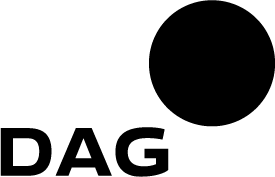
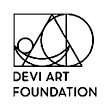
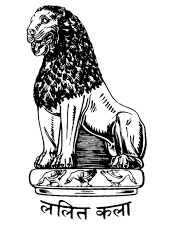
2. Famous Indian Art Museums/Galleries like the National Gallery of Modern Arts, National Museum, Victoria Memorial, Vadehra Art Gallery (New Delhi), Nature Morte (New Delhi), Gallery Chemould (Mumbai), Chatterjee & Lal (Mumbai), DAG Modern (New Delhi), Experimenter (Kolkata), Lakeeren Art Gallery (Mumbai)
3. Auction houses: Saffronart, Sotheby’s, Pundole’s, AstaGuru, and Bonhams etc.


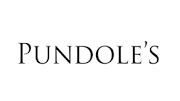
4. Private Non-commercial art Initiatives like the Foundation for Indian Contemporary Art (FICA), Kanoria Centre for Arts, TIFA Working Studios, Khanabadosh, etc. are the organizations that focus on enhancing opportunities for Artists and curators.
Specialisation Tracks In This Career
1. Curator (Painting)
Curators of Paintings are responsible for acquiring, collecting, and cataloging (listing) works of art in art museums and galleries. They usually perform all the major activities of relocating, framing, and positioning the artworks and also conduct extensive research on their specialized subject areas. Most of the curators specialize in one of the many subject areas: Contemporary art, Modern art, Impressionist Art, European Art, American Art, Expressionistic art, etc.
2. Curator (Digital art/Installation Art)
Curators of Digital art are responsible for projecting and displaying art using a digital medium. They look after the ways through which the artwork can be digitally projected/displayed and stored. They are involved in using projection techniques that enhance an audience’s impression of sensory experience, and many digital installations attempt to create immersive environments.
3. Curator (Sculpture)
Curators of Sculpture are responsible for research, exhibitions, and acquisitions related to the museum’s sculpture collections. These professionals specialize in various public art and monuments, the history of materials, and methods. They are also involved in the preservation, research, and study of the age-old sculptures, their significance, and their history. They deal with collections on Western European Sculpture, 19th-century Indian sculpture, and history, or some small-scale contemporary sculptures dated back in history.
4. Curator (Ceramics)
Curators of Ceramics, Metals, and glass look after the stained and painted glass, painted enamels on copper and other materials of ancient history. The professionals in this specialized field study and research the ancient collections that span mainly medieval to contemporary times. Their focus areas range from ancient pottery to vintage copper materials.
5. Curator (Craft)
Craft Curators are involved in the planning and organizing of craft exhibitions and events. They work towards creating ways in which craft can be reorganized, rethought, and re-made. They usually engage with local and skilled workers, research, study, and examine various ancient handicrafts, decorative arts, and studio arts (such as pottery, weaving, woodturning metal work, etc.).
Career Growth
You can start working as an Art Intern/Assistant Curator/ Conservator/ subject expert depending on your area of specialization and years of work experience. As an Art Curator, your career progression would be:
Art Intern – Assistant Art Curator – Associate Art Curator – Senior Curator - Head/Chief Art Curator
Salary Offered
1. At an entry-level, you may start on a lower salary or a stipend of around 10,000 – 15,000 per month.
2. At the junior level, with an experience of 2-4 years, you may start earning a decent pay of around Rs.25,000 – 30,000 per month or even more.
3. At Middle-level, you may earn around Rs.80,000 – 1,25,000 per month.
4. At the Senior- level, you may earn around Rs.95,000 – 2,00,000 per month or even more.
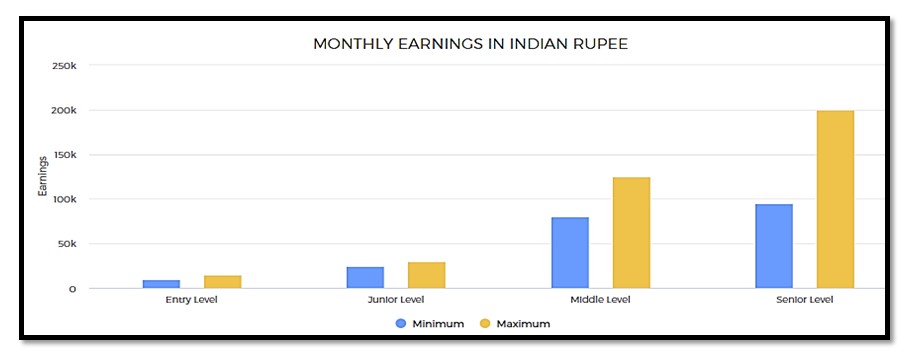
Monthly Earnings In Indian Rupee
Entry Level | Junior Level | Mid Level | Senior Level | ||||
Min Earning | Max Earning | Min Earning | Max Earning | Min Earning | Max Earning | Min Earning | Max Earning |
10000 | 15000 | 25000 | 30000 | 80000 | 125000 | 95000 | 200000 |
1. Entry level: 0 - 2 years of work experience
2. Junior Level: From 1 to 12 years of work experience
3. Mid Level: From 5 to 20+ years of work experience
4. Senior Level: From 10 to 25+ years of work experience (there could be exceptions in some high-end technical, financial, engineering, creative, management, sports, and other careers; also shortly, people will reach these levels much faster in many careers and some careers, these levels will have no meaning as those careers will be completely tech skill driven such as even now, there is almost no level in a Cyber Security Expert’s job)
Work Activities
1. Identifying objects, actions, and events: Identifying various characteristics of objects; observing and understanding actions and events; understanding changes in actions and events.
2. Getting Information and learning: Observing, hearing, reading, using computers, or otherwise obtaining information and learning from it.
3. Analyzing and interpreting data and information: Analysis of data and information to find facts, trends, reasons behind situations, etc.; interpretation of data to aid in decision-making.
4. Communicating with co-workers and others: Communicating with people in writing, verbally or otherwise inside your workplace and various other people who have professional relationships with your place of work including vendors, government officials, etc., or with people at large.
5. Communicating with customers/Clients: Communicating with potential and existing customers/clients of your organization in writing, verbally, or otherwise.
6. Creative thinking: Developing new ideas, concepts, innovative solutions to problems, newer ways of getting things done, designing products and services, creating works of art and craft, etc.
7. Assessing and evaluating quality: Assessing and evaluating the quality of materials, systems, processes, products, services, etc.
8. Updating and using relevant knowledge: Keeping updated with the latest knowledge relevant to your fields of work and use of the relevant knowledge in getting things done.
Future Prospects
According to FICCI, and KPMG, the Indian Visual Arts Industry has witnessed an inflow of wealth, with a new emerging breed of high-net-worth collectors that consider art and collectibles as a major asset. Further, private players, including art galleries and auction houses, have been instrumental in providing depth to the industry and supporting the entire infrastructure. The Indian Visual Arts Industry has garnered Rs.14.6 Billion in recent years and holds an even greater potential in terms of its impact on the Indian economy, through its direct contributions to employment, and skills development as well as supporting several high-value ancillary industries.
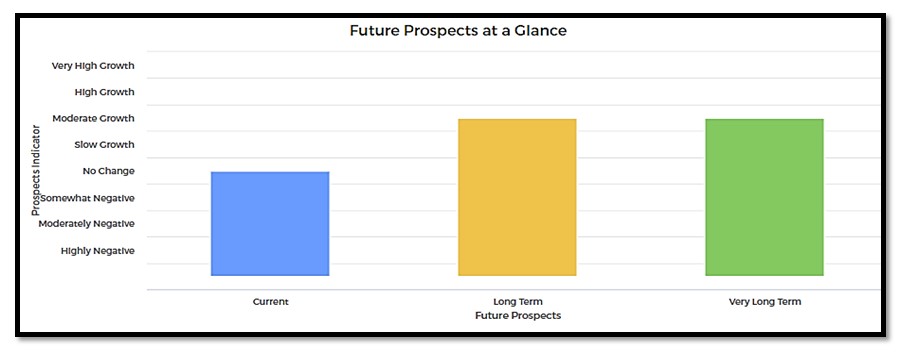
Future Prospects At A Glance
Current (0-1 year) | Long Term (2-5 years) | Very Long Term (6-10 years) |
No Change | Moderate Growth | Moderate Growth |


